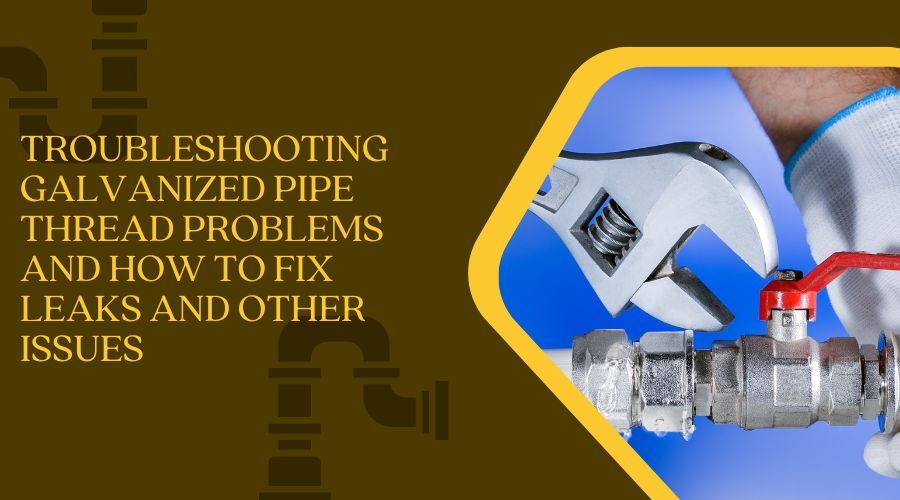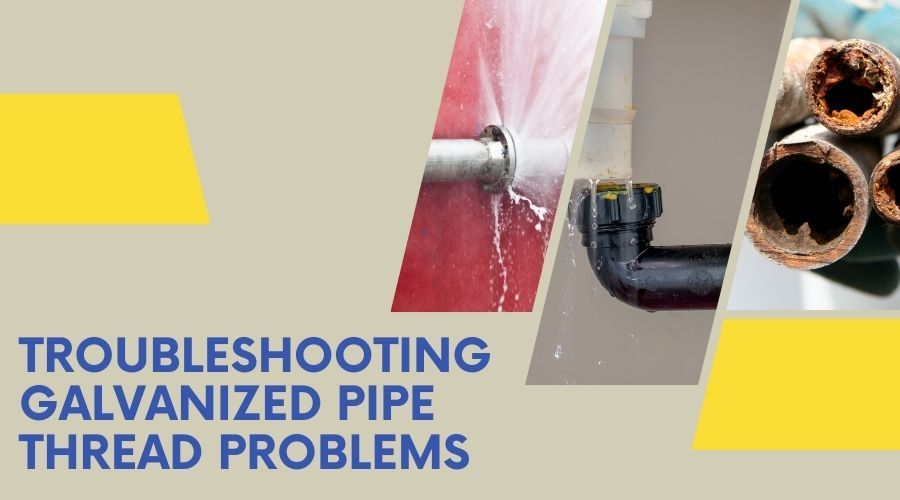
Galvanized pipes are a popular choice for plumbing installations because they are durable, long-lasting, and corrosion-resistant. However, even the most well-maintained galvanized pipes can experience problems with their threads, resulting in leaks, clogs, and other issues. In this article, we'll explore the common problems that can occur with galvanized pipe threads and how to troubleshoot and fix them.
Before we dive into the problems and solutions, it's important to have a basic understanding of how galvanized pipe threads work. Galvanized pipes have threads that are cut into the end of the pipe, which allows them to be connected to other pipes or fittings using a threaded connection. The threads on galvanized pipes are typically tapered, which means they get narrower toward the end of the pipe. This taper helps to create a tight seal between the pipes and prevent leaks.
Despite their durability, galvanized pipes can experience various problems with their threads over time. Here are some of the most common issues you might encounter:
Galvanized pipes are designed to resist corrosion, but over time, the protective zinc coating on the pipe can wear away, leaving the underlying steel vulnerable to rust and corrosion. When this happens, the threads on the pipe can become weakened or damaged, which can lead to leaks and other issues.
Galvanized pipe threads can also become damaged over time due to wear and tear or improper installation. This can cause the threads to become stripped or otherwise deformed, making it difficult or impossible to create a tight seal.
Galvanized pipes can also experience clogs due to the accumulation of sediment, minerals, or other debris in the pipe. When this happens, the flow of water through the pipe can be restricted or blocked, leading to low water pressure or other issues.

If you're experiencing problems with your galvanized pipe threads, here are some steps you can take to troubleshoot and fix the issue:
The first step in troubleshooting galvanized pipe thread problems is to identify the issue. If you're experiencing leaks or other issues, inspect the threads on the affected pipe to see if there is any visible damage or corrosion. If you're experiencing low water pressure or other flow issues, you may need to inspect the pipes for clogs or other obstructions.
If you've identified a problem with the threads on your galvanized pipe, the first step in fixing the issue is to clean the threads thoroughly. Use a wire brush or a pipe cleaning tool to remove any debris or corrosion from the threads. Be sure to clean both the male and female ends of the pipe to ensure a tight seal.
Once you've cleaned the threads, apply a thread sealant to the male end of the pipe. Thread sealant is a type of adhesive that helps to create a tight seal between the threads on the pipe. Be sure to use a sealant that is compatible with galvanized pipes.
After applying the thread sealant:
1. Reconnect the pipes or fittings using a threaded connection.
2. Tighten the connection carefully, using a pipe wrench or other tool as necessary.
3. Be careful not to over-tighten the connection, as this can cause the threads to become stripped or otherwise damaged.
Once you've reconnected the pipes or fittings, turn on the water and test for leaks. If you're still experiencing leaks or other issues, you may need to repeat the cleaning and sealing process, or consider replacing the affected pipe or fitting.
Question: Can galvanized pipes be repaired?
Answer: Yes, galvanized pipes can be repaired if the damage is not too severe. If the threads are damaged, they can be cleaned and sealed to create a tight seal. However, if the pipe itself is severely corroded or damaged, it may need to be replaced.
Question: How can I prevent galvanized pipe thread problems?
Answer: Regular maintenance and inspection can help prevent galvanized pipe thread problems. Be sure to inspect your pipes periodically for signs of corrosion or damage, and clean and seal the threads as necessary.
Question: Can I use thread tape instead of thread sealant?
Answer: Thread tape can be used instead of thread sealant, but it may not be as effective at creating a tight seal between the threads. If you choose to use thread tape, be sure to use high-quality tape compatible with galvanized pipes.
Galvanized pipes are a reliable and durable choice for plumbing installations, but they can experience problems with their threads over time. By understanding the common issues that can occur with galvanized pipe threads and taking steps to troubleshoot and fix them, you can ensure that your plumbing system remains in good working order. Whether you're dealing with leaks, clogs, or other issues, the tips and techniques outlined in this article can help you get your pipes back in shape.